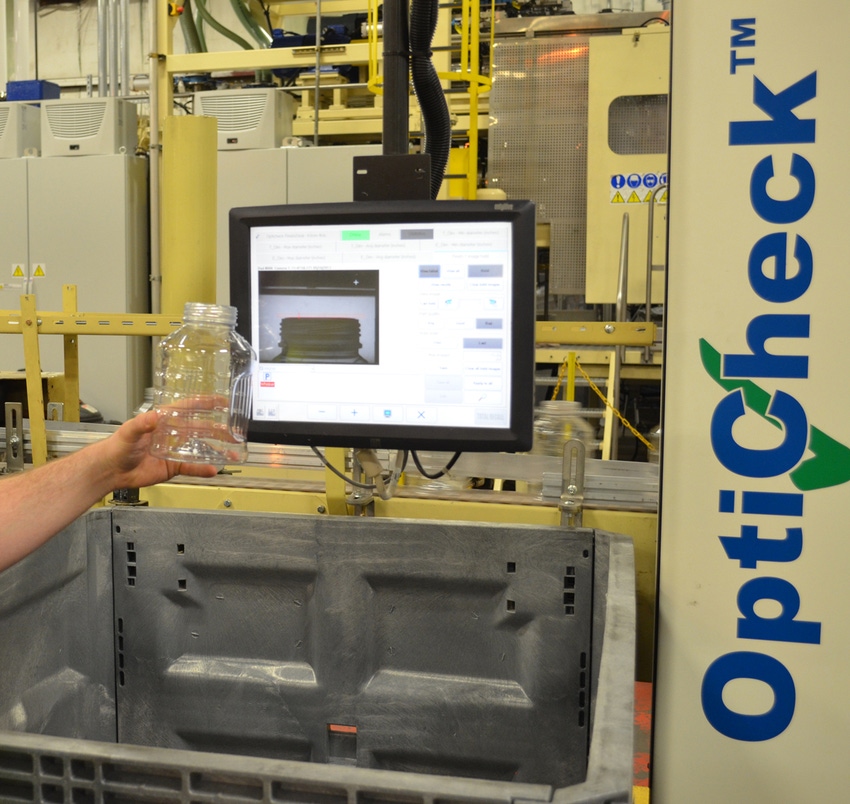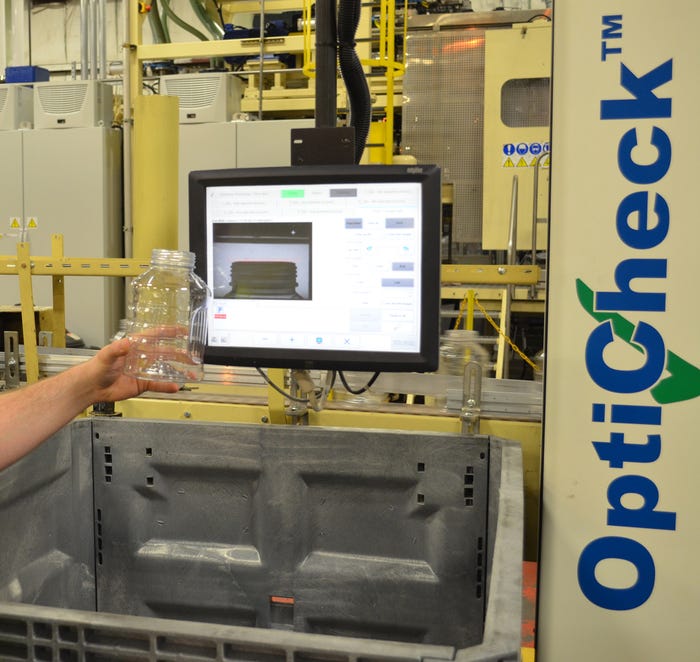Fifteen minutes. Sure, it's part of a mind numbing catch phrase from Geico, but it's also the amount of time between blowing and filling a PET bottle. During those 15 minutes, consistent container quality is crucial as defects can cause serious and costly disruptions.In addition, when the PET containers are two disparate types - standard beverage bottles and wide mouth jars - being fabricated on the same machine, it adds another layer to the complexity of the blowmolding process.
February 5, 2014

Fifteen minutes. Sure, it's part of a mind numbing catch phrase from Geico, but it's also the amount of time between blowing and filling a PET bottle. During those 15 minutes, consistent container quality is crucial as defects can cause serious and costly disruptions.
In addition, when the PET containers are two disparate types - standard beverage bottles and wide mouth jars - being fabricated on the same machine, it adds another layer to the complexity of the blowmolding process.
These challenges are being faced by, at the co-located facilities of Graham Packaging Co., a blowmolded plastic container manufacturer. As a result, the company employed Agr International's Process Pilot automated blowmolder control system, along with the OptiCheck vision-based inspection and measurement system.
 Installed in the blowmolder, the Process Pilot uses a combination of software and high accuracy sensors to proactively manage material distribution throughout the container. Downstream, the OptiCheck ensures that all output meets specifications before entering the filling line.
Installed in the blowmolder, the Process Pilot uses a combination of software and high accuracy sensors to proactively manage material distribution throughout the container. Downstream, the OptiCheck ensures that all output meets specifications before entering the filling line.
Case study with Graham
The containers Graham makes for the food processor have different finish diameters: a 43mm finish for the bottles, and from 63mm to 83mm for the jars. The ability to produce both types on a single Sidel blowmolder with a spindle diameter of 43mm at first appeared impossible, but the container manufacturer has developed an economical approach that adapts to each format, according to Agr.
Graham's response is the deployment of its proprietary blow-trim technology. In the blow-trim process, custom molds inserted inside the blowmolder shape the wide-mouth jars out of 43mm diameter preforms. Instead of using the threads of the original preform, the mold forms a new set of jar threads at a point along the preform sidewall. In a secondary process, the portion of the jar above the newly blown threads--the moil, or excess area--is cut off by a trimmer downstream and recycled.
According to David Piccioli, director of global PET technology development for the York, Pa.-headquartered Graham, the blow-trim process is more challenging than traditional reheat stretch blowmolding. "It is much more difficult to control the blown finish," he said.
The difficulty lies in attaining the right material distribution in the body and thickness in the thread region, which is where the Process Pilot comes in.
Its thickness gauge sensors measure 16 different points on the side wall, around the perimeter of the bottle. Algorithms analyze minute changes in material distribution. If there are any deviations from specifications, the Process Pilot automatically corrects the corresponding area of the blowmolder. Working in conjunction with the blowmolder controls, the system can simultaneously adjust multiple settings--lamps, blow pressure, and timing, for example-to maintain tight process control parameters with minimal operator intervention.
Last line of defense
Because jar finish is critical to protect product integrity, the containers go through one final inspection step before being conveyed through the wall to the filling plant. Graham personnel view the Agr OptiCheck, a compact inspection and measurement system, as their "last line of defense." The OptiCheck's finish gauging module uses a proprietary configuration of multiple cameras, LED-based backlighting, and high-speed imaging to measure container dimensions inline to an accuracy of 0.002 inches. The system's image analysis algorithms identify flaws and blemishes, such as whiskers left from trimming, rejecting jars that could pose seal surface-related problems.
Fabricating the wide-mouth jars from standard preforms eliminates the need for special handling equipment and a dedicated blowmolder with larger spindles. The jar line is able to run at normal production speeds, in synch with the filling line, making the customized containers very competitive. Automated management of material distribution overcomes many potential container issues, whether relating to operator inexperience, preform variability, or environmental influences. Controlling the blowmolding process tassures that every jar and bottle can be sealed flawlessly to protect the integrity of its contents, the company stated.
In the 12 months following the installation of the Process Pilot, the bottle plant experienced a 52.7 percent improvement in waste reduction. The Process Pilot is compatible with Krones, KHS, and Sidel blowmolders.
An Agr International spokesperson told PlasticsToday that the company anticipates going behind the beta testing stage into commercialization for its software to control the level of crystallinity in the 4Q of 2014.
About the Author(s)
You May Also Like


